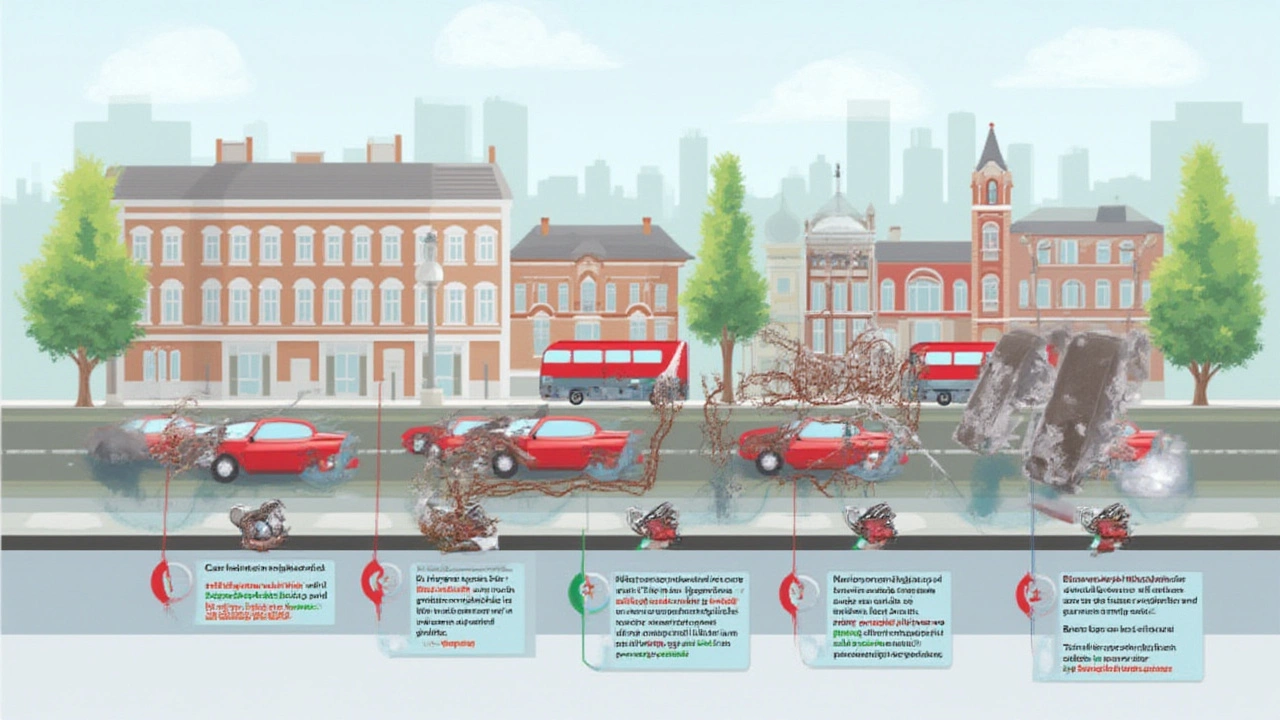Most car owners rarely think about their radiator—until the temp gauge jumps, or steam billows out from under the hood. It’s not exactly the glamorous side of driving, but ignoring your radiator’s health can leave you stranded in the worst spot: middle of traffic, on a scorching July day, your engine hissing mad. Manufacturers love to play coy with radiator lifespan, too. Flip through your owner’s manual and you’ll notice there’s rarely any specific advice about when you should draw the line and replace that key part. So, are you supposed to just wait for catastrophe, or is there a smarter way to manage?
How Long Do Radiators Really Last?
The million-dollar question is: how long does a car radiator last? There’s no one-sentence answer because the life of your radiator depends on a cocktail of things—material, how you drive, the climate you live in, and how religiously you change your coolant. For most cars built after the year 2000, radiators are made of aluminum and plastic instead of old-school copper or brass. That lightweight construction is great for gas mileage, but comes with a tradeoff: plastic tanks get brittle and crack, sometimes before you hit 100,000 miles.
On average, a factory-installed radiator might last between 8 and 12 years, which for many people is the lifetime of the car. But—and it’s a big but—those numbers change fast if you skip regular cooling system flushes or run low-quality coolant. Heat cycles, vibration, and exposure to road salt speed up wear and tear. The earliest warning sign? Coolant stains or droplets on your driveway. Even a faint sweet smell under your hood can mean trouble on the way.
Let’s talk about mileage. Some folks swap their radiators once they cross 100,000 miles, and it’s not a bad rule of thumb. But if you do lots of city driving, fight through harsh winters, or live somewhere blazing hot, that radiator works overtime and will likely quit earlier. High-mileage cars in harsh climates can burn through a radiator in as little as five to seven years. Randy, a mechanic in Houston I spoke to, says he hardly ever sees original radiators last past 120,000 miles in the Texas heat. In comparison, drivers in mild areas sometimes push theirs to 150,000 miles or more, especially if they keep that coolant fresh.
One thing to keep in mind: an “aftermarket” radiator isn’t always an upgrade. Not all radiators are engineered the same way, and sometimes cutting corners on a cheap replacement makes your next problem come faster. Sticking with a reputable brand that matches your make and model is key. And yes, you’ll pay a bit more, but it beats a tow truck fee and possible engine damage later.

Signs You Need to Replace Your Radiator
The real trick is knowing what whispers trouble—long before disaster strikes. Look for leaks, of course, but the list of clues gets much longer. If your temperature gauge keeps edging upward, even on cool days, or your heater stops working right, that’s your car’s way of waving a red flag. A failed radiator can also send your cooling fan into overdrive, which is easy to spot: you’ll hear that fan running loudly, well after you’ve parked.
Cracked plastic end tanks are another flashing sign. Open your hood and scan the sides of the radiator—see any yellowish-brown stains? That’s dried coolant, proof your radiator’s trying to tell you something. Also, check the radiator cap for white crusty buildup. White deposits inside the radiator or reservoir mean you may have a slow leak or, even worse, a mix of coolant and air that’s starting to corrode everything inside.
Did your engine overheat recently? Don’t just refill coolant and move on. Overheats can warp the plastic or blow out internal baffles, making your radiator unreliable going forward. After even one “red zone” incident, it’s smart to get a pressure test done.
Sometimes the symptoms aren’t so obvious. Gradually rising engine temps, gurgling sounds as the car cools down, or random ‘check engine’ lights paired with mysterious coolant loss all count as warning lights, too. If you’ve patched up hose after hose or replaced the thermostat more than once, but the problem keeps coming back, be suspicious of your radiator. It can clog up inside with rust or debris, and outside with bugs or road grime. That blockage cuts down efficiency and can leave you flirting with a breakdown.
Big tip: don’t fall for coolant “stop-leak” products. While tempting in a pinch, they’re like putting a Band-Aid on a broken bone. They gum up the inside of your cooling system and turn a small problem into a major repair.

Making Your Radiator Last: Maintenance Hacks and Timelines
Caring for your radiator isn’t rocket science, but it pays off big if you’re consistent. Start by keeping an eye on your coolant levels. Whenever you pop the hood for an oil check, take a glance at the coolant overflow tank. Keep it topped off with the correct coolant for your car, and never mix types if you want to avoid chemical reactions that eat away seals and plastic.
Flush your coolant system every 2 to 3 years, especially if you drive lots of short trips. Those stop-and-go routines are tough on your radiator because the system never gets hot enough to burn off moisture that leads to corrosion. When you flush, don’t just drain and refill—get the radiator thoroughly cleaned to kick out old contaminants. Most shops have equipment for a full-pressure flush and will check the health of your coolant with a quick chemical test.
Inspect your radiator hoses regularly for cracks, swelling, or leaks. Hoses are the weak link—if one bursts, it can cook the engine before you even see a warning light. Replace any hose that feels soft or ‘mushy’ when you squeeze it.
Pay attention to your radiator cap, too. It’s a tiny part but a failing cap can botch the whole system by letting pressure escape, causing coolant loss or boiling over. Replace it every time you spot a leak near the cap, or if it looks crusty or rusty.
If you want your radiator to beat the odds, wash it down a few times a year. Remove leaves, bugs, and debris from between the fins using a gentle stream of water and a soft brush. This helps heat transfer and keeps your car running smoother in hot weather.
For those living in places with lots of road salt or mud, rinse the underside and the front of your radiator often during winter. Salt speeds up corrosion and can slash radiator lifespan by several years.
Last, don’t overload your car or tow more than recommended. Hauling big weights puts extra stress on the cooling system, which can push an older radiator to the limit. Stick to your vehicle’s towing specs if you want to avoid those dreaded overheating episodes.
So, when’s the magic moment to swap your radiator? There’s no one-size-fits-all answer, but here are some rough timelines:
- Factory radiator with good maintenance: 10–12 years or 100,000–150,000 miles
- Lots of city driving or harsh climates: 6–8 years or 75,000–100,000 miles
- Visible leaks, unexplained coolant loss, or repeated overheating: Replace immediately, regardless of age
Short version: watch for signs, keep up with coolant flushes, and trust your gut. If you have doubts, a reputable shop can pressure test your cooling system and tell you whether your radiator’s days are numbered. And remember, radiator replacement might sound like a headache, but it’s way cheaper than a new engine. A little attention now can save you thousands (not to mention a roadside meltdown) later down the road.






